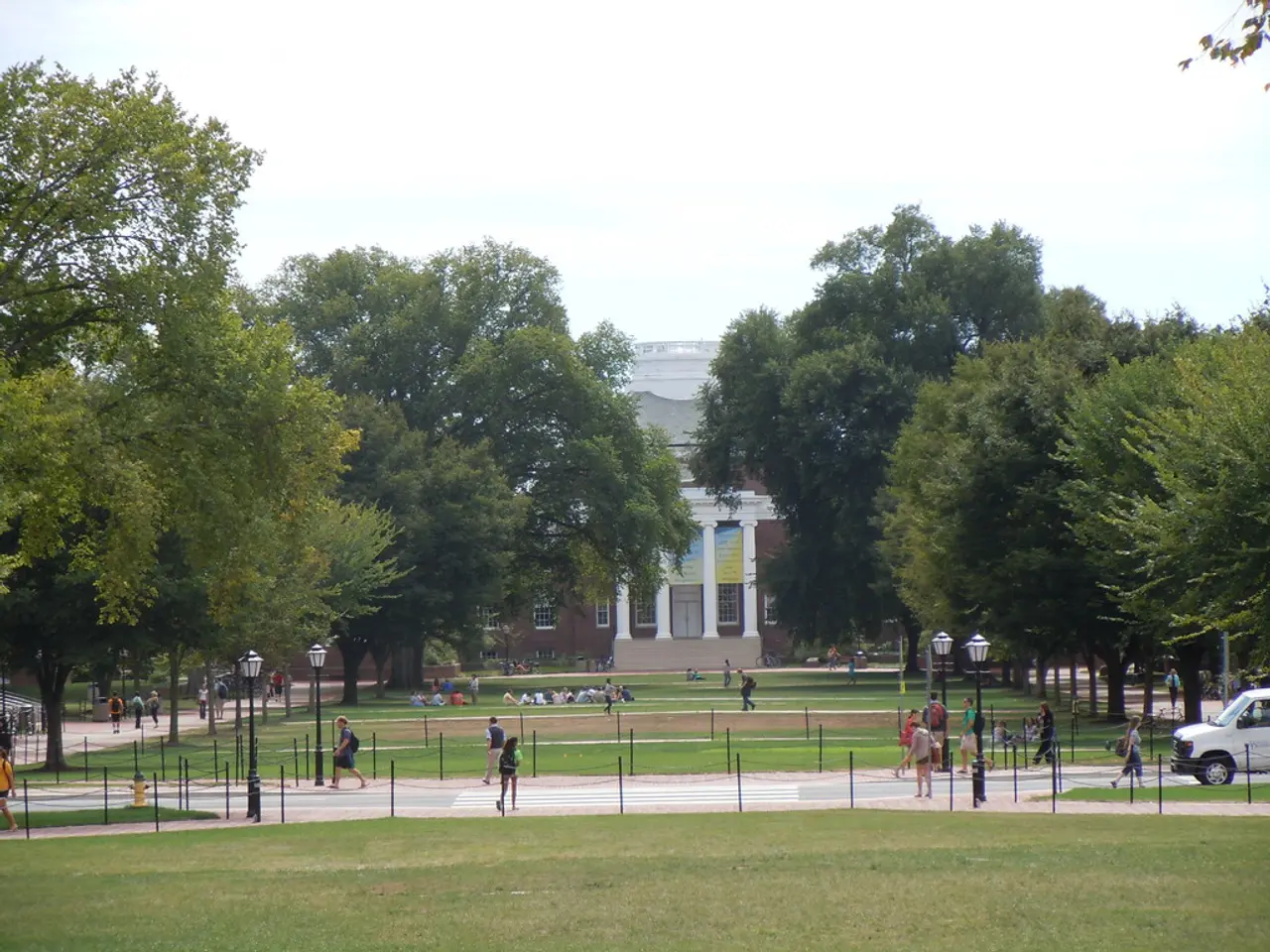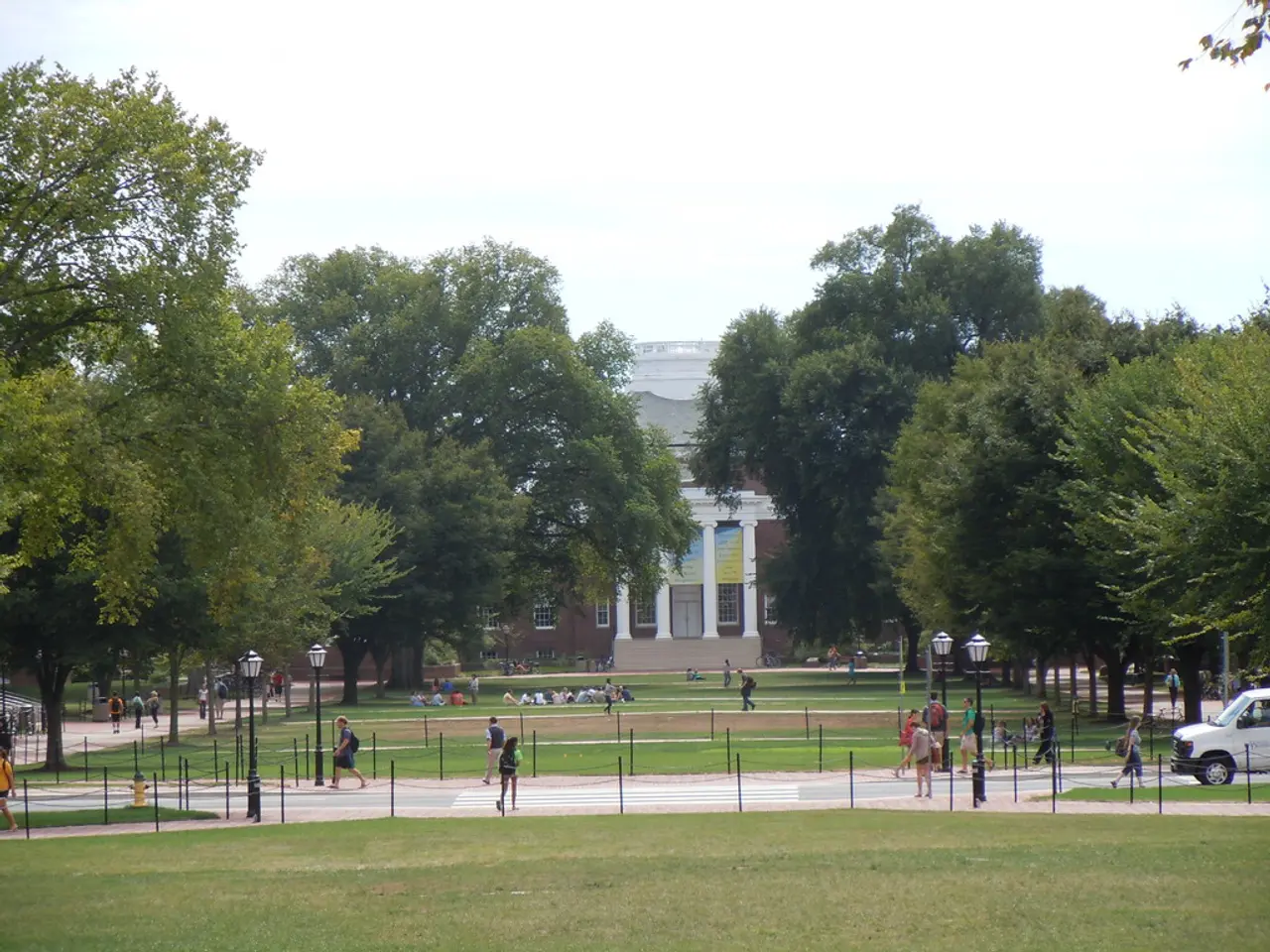Altered university funding scheme places scrutiny on Ruto for the fourth time
In a significant shift for Kenya's higher education landscape, President William Ruto has redesigned the university funding model, replacing the previous Differentiated Unit Cost (DUC) system with a new Student-Centred Funding Model. This model, effective from September 1, 2023, channels funds directly to individual students based on a Means Testing Instrument (MTI) that assesses financial need [1][5].
The new model categorizes students into financial need bands, determining the tuition fees they pay. For instance, clinical medicine and dentistry students will pay between Ksh22,371 and Ksh75,000 per semester, while architecture and engineering students will pay fees ranging from Ksh12,960 to Ksh57,888 [1][3]. These changes apply to both new and continuing students.
The Higher Education Loans Board (HELB) and the Universities Fund are expected to support over 201,000 first-year students under this funding framework, emphasizing direct funding aligned with students’ assessed financial need [4].
However, the new model has faced criticism and challenges. One vice-chancellor has criticized the new one-to-100 scale, stating that no amount of tweaking will fix a fundamentally flawed approach that lacks transparency, consistency, or adequate funding [2]. Universities are grappling with deepening deficits, stalled projects, unpaid salaries, and a potential breakdown in academic operations due to no fresh funding allocation to offset lower tuition revenues [3].
The government has yet to remit Sh17 billion in student tuition fees owed from last year, adding to the Sh85 billion already owed to universities [3]. Moreover, the successive revisions to the funding models have sparked court cases and undermined trust in the education system [5].
Despite these challenges, the new funding model aims to make university education more affordable and accessible while ensuring financial sustainability for institutions [1][3]. Under the initial plan, vulnerable students were to study for free with no financial obligations, as the government would provide 100% funding [1]. The most expensive course, currently Medicine, has been reduced from Sh612,000 to Sh450,000 [1].
The new system will have 100 points to gauge a student's financial status, with 100 representing the most needy and 1 the most able to afford fees [1]. Each learner will now be categorized on this new scale, replacing the previous four tiers and the initial three categories of vulnerable, less vulnerable, and able [1].
President Ruto has presided over a two-and-a-half-year policy rollercoaster that has seen the university funding model undergo three reviews [5]. However, he has yet to fulfill any of the promises he made to fund universities during his 2022 election campaign [5]. The lowest direct payment by a student's family will be Sh11,628, while the highest fee charged to a student will be Sh450,000 [1].
This re-engineered funding model shifts from institution-focused funding to a more individualized, needs-based financial assessment, reducing fees while supporting students through targeted subsidies and financing mechanisms. The implementation of this new model is set to start in September, alongside a reduction in university fees.
[1] The Standard, "New university funding model to be implemented in September," 2023. [2] The Nation, "Vice-chancellor slams new funding model," 2023. [3] Daily Nation, "Universities face financial crisis as new funding model kicks in," 2023. [4] The Star, "HELB, Universities Fund to support over 201,000 first-year students," 2023. [5] Business Daily, "Ruto's university funding model: A policy rollercoaster," 2023.
- The new Student-Centred Funding Model in Kenya's higher education aims to make sports and education-and-self-development more accessible by reducing university fees and providing targeted subsidies based on individual financial needs.
- The implementation of this new model, effective from September 1, 2023, follows a significant shift in the university funding landscape, as it channels funds directly to students based on a Means Testing Instrument that assesses financial need.
- The epaper reports highlight that finance, health, and general-news sectors are closely monitoring the new funding model, as it intends to address the financial crises in universities, such as stalled projects, unpaid salaries, and deepening deficits.




